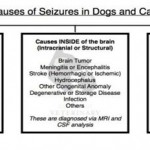Today I wanted to share an article written by Reisa Stone. Reisa is an animal communicated and energy healer who has shared a strong bond with animals since childhood and has worked with them extensively for many years. She has been very successful working with and rehabilitating traumatized animals. To find out more about Reisa and her work, visit her website.
Does Your Pet Have PTSD? by Reisa Stone
There has been debate recently about whether animals suffer from Post-Traumatic Stress Disorder. If you’ve ever rescued, you’ll know that an abused animal can exhibit lingering anxiety, fear and inexplicable aggression.
Conclusive answers for mainstream animal behaviorists have been blocked by an inability to verify that traumatized animals also have the defining PTSD factors of (a) intrusive, repetitive thoughts about the trauma; and (b) nightmares related to trauma.
As an Animal Communicator, trainer and behaviorist, I run across animals with PTSD frequently. As I can hear their voices and share their mental “movies,” I can say conclusively, yes, they have PTSD. Trauma causes nervous system damage, to which every species is susceptible.
External triggers create distressing symptoms your pet can’t help but exhibit. For example, if they were harmed by human hands, even a loving hand reaching towards them may trigger a negative response. A playfully tossed stick may represent a beating. Just as a car backfiring may cause a war vet to dive for the floor and even become violent towards his/her family, a triggered animal may react with in unexpected ways, from seemingly inexplicable causes.
I have a great deal of success with animals who exhibit PTSD symptoms. I treat traumatized animals with a combination of counselling and focused energy healing. Just as with humans, having your story finally heard is the first giant step towards healing. Distressing symptoms being compassionately understood is the next.
With aggressive and anxious pets, I tell them I believe and understand their story completely, and acknowledge that they’ve coped the best way they know how. A combination of desensitization exercises and energy healing sessions help restore the nervous system. I work with the animal’s chakras, or physical energy centres.
During Animal Communication sessions, I let you know the specific type of touch your pet associates with abuse, and which feels healing. I understand the frustration of reaching out a hand in kindness, only to be rebuffed or even bitten. We may discover that it feels safe when you present the back of your hand rather than your fingers, or that your pet would prefer to always be the one to approach.
In working with traumatized horses, I’ve sat on the ground with my back to them. Eventually, curiosity gets the better! But even when I feel the soft nose exploring my neck and back, I refrain from petting—at least at first. Once safety is established, I form a mental image of what my touching them would look like. I wait for permission. Permission doesn’t always come the first or even second time.
I’ve seen an interesting thing with horses: sometimes their first attempt to show they trust you, is by nibbling. If you’re not familiar with horse behavior, it can be disconcerting to see those huge teeth coming at you! The horse’s intent may be to groom you, just as they would a pasture buddy. I’ve seen people yell and smack horses who extend this incredible gesture of friendship. Please don’t. If your horse has never had a close relationship with a human, they don’t understand your skin is fragile.
Instead of pushing them away, back off and go to your calm centre. Picture your horse grooming you with only her lips, teeth closed. Explain that human skin is fragile, and that she must honour the “teeth closed” part. Wait until you feel she’s agreed. I still remember what it felt like the first time an immense, reactive Percheron mare rescued just days from slaughter, swirled her soft lips in my hair 😀
One of the first things I teach owners is that our conditioned reaction to say, “No!” to aggression and exercise force, is driving the reaction even deeper into the nervous system, creating even more aggression. Yanking on a collar, reins, or God forbid, using a shock collar, worsens the disorder. A diagnosis of “fear aggression” is half right. Fear is one symptom of PTSD, but not the whole picture.
And as I shared re: horse behavior, sometimes what appears to us as aggression, is really misunderstood friendliness. In order to not miss that precious window of opportunity, we need to understand the animal’s intent.
An important facet of healing is to create a safe space that belongs to the animal alone. That may mean a personal house (which is why they hide under the bed, for safety), dark closet (door half open!), a corner of your horse’s stall or paddock he can retreat to without interference.
Safety means that under no circumstances do you touch your animal when they’ve retreated there, nor allow other animals to invade. When your pet was developing PTSD, he/she felt there was no safe place for them in the world. When you create this utterly safe place, they can begin to regain trust and heal their nervous system.
Another area in which there is no published research, is the effect of being abandoned or having offspring taken away. Animals feel both very deeply. They can develop PTSD symptoms from either. Even if they don’t acquire actual post-traumatic symptoms, they develop mistrust and insecurity towards humans and the world in general.
Shelter staff acknowledge the harsh effects of abandonment and homelessness as “kennel craziness.” The longer a pet endures these conditions, the more their behavior escalates. Blessings to volunteers who ease shelter pets’ lives. They’re alleviating or even preventing the formation of long lasting trauma symptoms.
Post-Traumatic Stress Disorder in animals has puzzled behaviorists for a long time, due to their inability to learn the animal’s point of view. With Animal Communication, backed by knowledge of PTSD and energy healing, pets can become calm and secure.
Copyright 2013 Reisa Stone. For permission to copy or reprint, please contact the author at info (at) reisastone.com






When we adopted our littermates, a trainer warned us that they could suffer from PTSD, because of the stress their mom went through when she was pregnant. I was shocked to hear this, because it was something I never considered. Our dogs are fine, but Sydney is shy around dogs she doesn’t know and Rodrigo hates loud noises (they freak him out). I don’t know if this is just part of their make up or a result of their mom being in such horrible conditions when she was pregnant with them.
I make a point of making them happy and healthy and I’ve had communication sessions with them and know that they love their life and us. They truly are the best dogs and I’m glad that we’re able to give them a better life.
I find incredible the depth of our pet’s emotions. When we truly open ourselves up to the way they think and feel a whole new world is revealed to us! Your guys are so very lucky to have such a loving and devoted parents 🙂
That was a fascinating article.
I’m certain Delilah suffers from some form of PTSD, we just try to make sure she feels safe and taken care of.
My spouse and I stumbled over here coming from a different web address and thought I should check things out.
I like what I see so now i’m following you. Look forward to checking out your web page for a second time.
Thank you for reprinting my article!
Yours in the love of animals,
Reisa